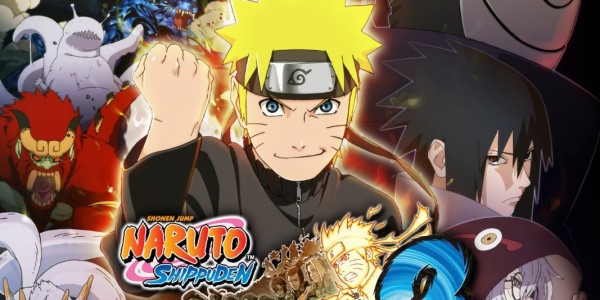Naruto has come a long way since the show and manga about an orange-clad, loud-mouthed young ninja debuted over 10 years ago. Though I once watched the show for its entrancing fights, the current run of Naruto Shippuden – its successor series – along with the latest edition in Namco Bandai’s game adaptation of the product, Naruto Shippuden: Ultimate Ninja Storm 3, have matured. The evolution of its titular character (and his supporting cast) is just as important a feat for the game as it is for the manga. This latest edition in the series has proven yet again how to do things right when creating a fighting game for a popular anime license.
When I was first introduced to Naruto all those years ago, I found him to be one of the most annoying fictional entities I had ever encountered. However, time has proven valuable for that annoyance as the young man’s maturation in the series has not only been more noticeable, his early deficit blooming into his later triumphs. The same goes for much of the supporting cast, as they too have changed over time. All the events leading up to this game have given weight to their struggles. And in case I had forgotten, there are plenty of flashback moments – characters and battlegrounds will literally transition in seamless fashion – during the campaign to remind me.
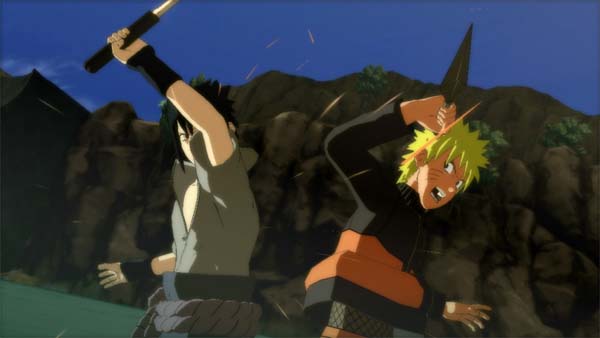
The sections of Naruto Shippuden that Ultimate Ninja Storm 3 covers are the most recent in the anime and go a bit beyond the show’s narrative reach. Having defeated Pain, Naruto is left to help his friends rebuild the Hidden Leaf Village following the destruction caused by the battle. However, the man truly behind Pain and the evil Akatsuki organization has poisoned the mind of Sasuke – Naruto’s best friend – and decided to make his move in conquering the world. It’s up to Naruto and his friends to gain the power they need to unite the five great ninja nations in order to stop this great threat.
To me, no other game series has been able to faithfully capture and adapt its anime source material quite like Ultimate Ninja Storm has with Naruto Shippuden. Several of the iconic scenes are played out word-for-word in beautifully rendered cinematics. Certain battles will even have in-fight dialogue, with some of the lines requiring an ultimate jutsu finish, taken directly from the show in an extra attempt to get that sense of authenticity. Though the ending differs from the anime and the manga – the Fourth Ninja World War is still ongoing in both – it’s acceptable given that the other option would be a massive cliffhanger.
Of course, everything can’t be recreated scene-for-scene or there wouldn’t be enough fighting to make a fighting game. As a result, extra, non-story-heavy battles were thrown in to spice things up and stay true to the spirit of the property. They also make for a welcome break from the cutscenes, which could possibly rival those found in the Metal Gear Solid franchise in length.
Having already played Ultimate Ninja Storm 1 and 2, it was incredibly easy for me to pick the game up and start bashing the AI ninja with relative ease. The controls and mechanics handle exactly the same as its predecessors, which is a good thing. Developer CyberConnect2 has found the perfect system to capture the unpredictable and strategic feel that some of the fights in this anime feature. Ninjutsus, ultimate jutsus, team support attacks, projectiles, dashes, substitutions, and more make for a game where the ninja with the better game plan wins out.
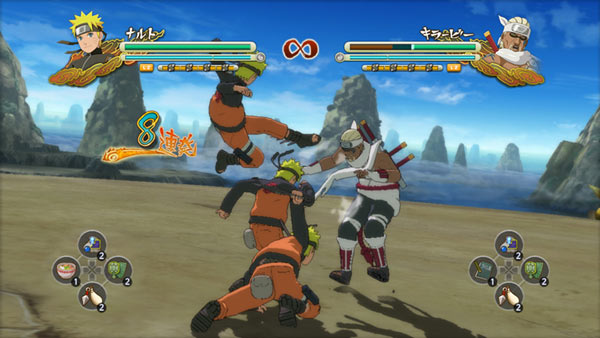
Boss fights once again feature the series’ signature quick-time events, which create tension and excitement as famous scenes from the show are acted. Players also have a chance to unlock bonus scenes through challenges at the end of skirmishes. A new type of combat, which resembles regular mechanics mixed with multi-enemy hack n’ slash features, is also included in the campaign. Since the game’s one-on-one clashes are more focused, this new mode comes naturally and complements everything already included in the campaign.
The one weak point of Ultimate Ninja Storm 3’s combat, the use of ninja tools, underwent a bit of a facelift since previous entries in the series, but it hasn’t come out looking much better. There are now two different types of ninja tools with their own distinct differences: Legendary and Heroic. Each can be used by leveling up their respective pouches. This is occurs after winning battles and choosing one of these two difficulties during “Ultimate Decisions” in boss fights for exclusive XP.
While the tools do help if you want to use them, most battles in story mode can be completed without ever assigning them. The only occasions where I ever took advantage of them were some of the tougher boss battles in order to achieve an S ranking. This also reflects poorly on the campaign’s difficulty, which is a bit on the easy side. When someone can get through a game without using a primary mechanic 98 percent of the time, it may be wise to make it more important (i.e. make the game harder) or scrap it completely.
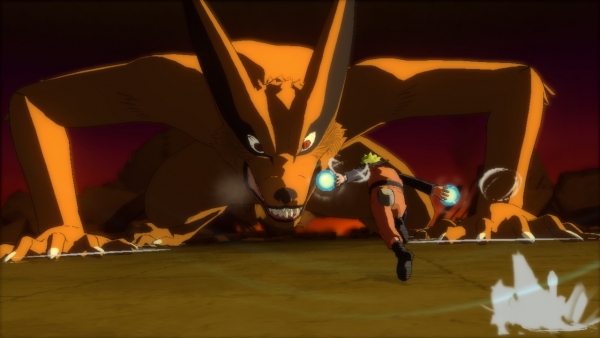 I was pleasantly surprise by the sheer variety offered in the game. For starters, there are over 80 playable characters in Ultimate Ninja Storm 3. Many are different versions of the same character; but since they represent these ninja at different stages of the show, they have separate abilities and thus play differently. There are even characters from the previous segments of the series, the original Naruto show, and some that are versions of characters we only see in flashback episodes (i.e. Young Kakashi). It’s an unbelievable roster that few other games can rival.
I was pleasantly surprise by the sheer variety offered in the game. For starters, there are over 80 playable characters in Ultimate Ninja Storm 3. Many are different versions of the same character; but since they represent these ninja at different stages of the show, they have separate abilities and thus play differently. There are even characters from the previous segments of the series, the original Naruto show, and some that are versions of characters we only see in flashback episodes (i.e. Young Kakashi). It’s an unbelievable roster that few other games can rival.
Similar to the roster, it was equally impressive to discover that there are tons of different collectibles that I could gather and use for my online profile – known as my Ninja Card – or use for other purposes. Titles, profile images, in-battle items, ultimate jutsu videos, and more are all either unlocked through the game’s various modes or purchased from its store via in-game currency. There are also battles that take place prior to the game’s events, extra quests, and epilogue scenes that are all acquired via sidequests or bonus objectives during and after the campaign finishes. There was so much to replay that I drowned nearly 20 hours into the campaign alone, which is incredible for a fighter.
When taking things to the Internet, I found most of my encounters free from the dreaded shinobi known as lag. The matchmaking system, while not always perfect, gave me the option of leaving any match that featured an opponent who outranked me. This saved me from plenty of unwanted pummelings. It’s certainly one of the more competent and user friendly online components for a fighting game that I’ve encountered.
As a fan of the show who likes to watch the original version, it’s always been a blessing to me that the Ultimate Ninja Storm series includes the game’s Japanese audio. To hear it as I did when watching the show makes it feel all the more like the real thing, yet the American version is still the default for any whose opinion differs and likes to hear the game in English. Aside from the voice acting, original tracks from the show’s soundtrack are also found aplenty in the game in addition to some tracks just for the game that I found to be fitting.
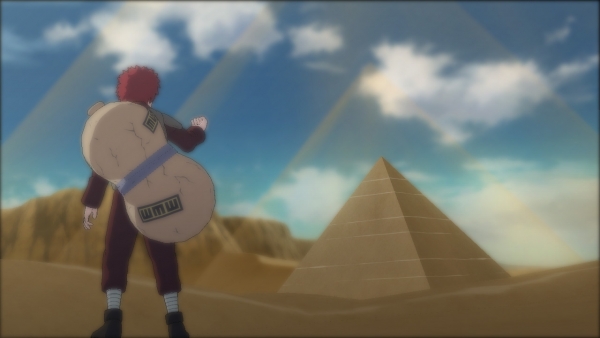
If there was any other complaint to be filed against this title, it would only be the illusion of “free roam” prior to the end of the game’s campaign. When I saw that I was entering “free roam” towards the story mode’s beginning, I wanted to run around and complete as many side objectives as possible. However, until the final boss battle is complete, these “free roam” sections are merely on-rails transitions to the next set of battles. While I understood the need to highlight where I needed to go, being forced in one direction where the mode is titled “free roam” felt deceitful.
That small bit of deceit is outweighed, however, when I account for everything that Naruto Shippuden: Ultimate Ninja Storm 3 has to offer. It’s allowed me to see Naruto’s complete evolution from nagging brat to inspirational savior in just as strong and touching a way as the show has, thanks to its dedication to authenticity in nearly every aspect. It’s a consistency that even translates when fighting against friends or strangers in one-on-one contests, which is a true sign that the developer and publisher know exactly what they’re doing with their licensed product. Even if you’re not a Naruto fan, the campaign, combat, and replayability are inviting and entertaining enough to welcome newcomers in to check out the storm.




